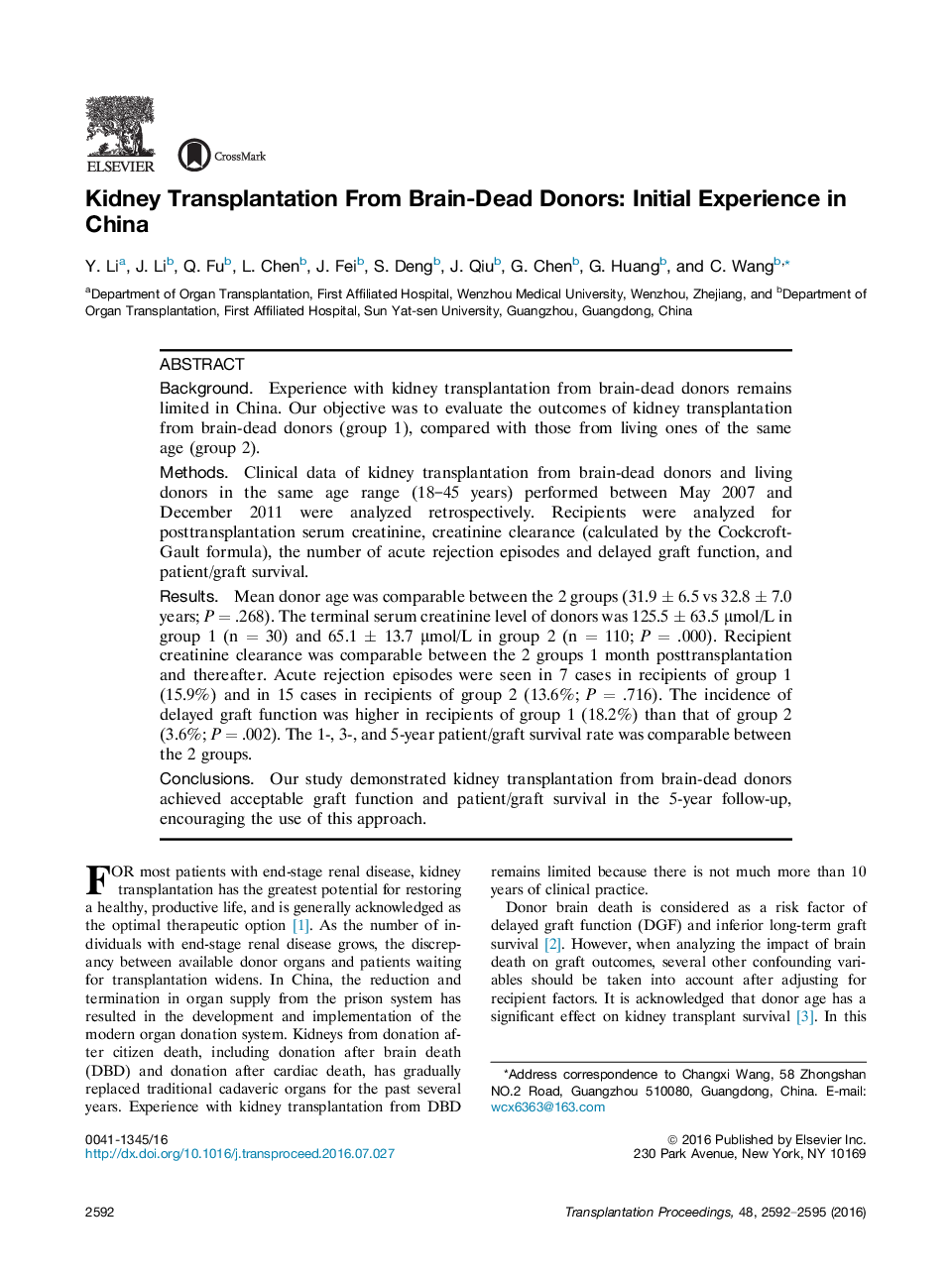| کد مقاله | کد نشریه | سال انتشار | مقاله انگلیسی | نسخه تمام متن |
|---|---|---|---|---|
| 5729192 | 1411677 | 2016 | 4 صفحه PDF | دانلود رایگان |
- The initial experience of kidney transplantation from brain-dead donors in China was summarized.
- Outcomes of kidney transplantation from DBD were acceptable and comparable to that from living donors, after being adjusted with donor age.
- The mechanisms underlying brain death-induced renal injury should be explored and the criterion and concept of brain death should be promoted.
BackgroundExperience with kidney transplantation from brain-dead donors remains limited in China. Our objective was to evaluate the outcomes of kidney transplantation from brain-dead donors (group 1), compared with those from living ones of the same age (group 2).MethodsClinical data of kidney transplantation from brain-dead donors and living donors in the same age range (18-45 years) performed between May 2007 and December 2011 were analyzed retrospectively. Recipients were analyzed for posttransplantation serum creatinine, creatinine clearance (calculated by the Cockcroft-Gault formula), the number of acute rejection episodes and delayed graft function, and patient/graft survival.ResultsMean donor age was comparable between the 2 groups (31.9 ± 6.5 vs 32.8 ± 7.0 years; P = .268). The terminal serum creatinine level of donors was 125.5 ± 63.5 μmol/L in group 1 (n = 30) and 65.1 ± 13.7 μmol/L in group 2 (n = 110; P = .000). Recipient creatinine clearance was comparable between the 2 groups 1 month posttransplantation and thereafter. Acute rejection episodes were seen in 7 cases in recipients of group 1 (15.9%) and in 15 cases in recipients of group 2 (13.6%; P = .716). The incidence of delayed graft function was higher in recipients of group 1 (18.2%) than that of group 2 (3.6%; P = .002). The 1-, 3-, and 5-year patient/graft survival rate was comparable between the 2 groups.ConclusionsOur study demonstrated kidney transplantation from brain-dead donors achieved acceptable graft function and patient/graft survival in the 5-year follow-up, encouraging the use of this approach.
Journal: Transplantation Proceedings - Volume 48, Issue 8, October 2016, Pages 2592-2595
